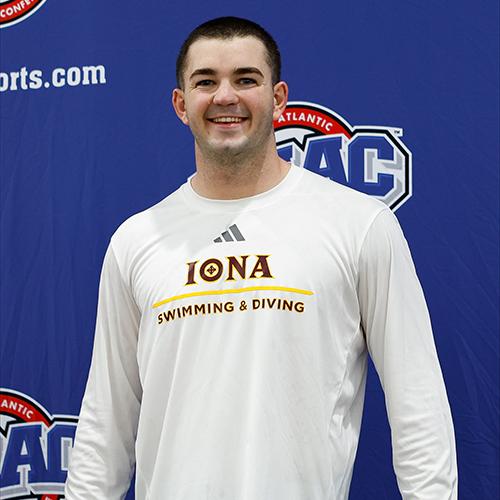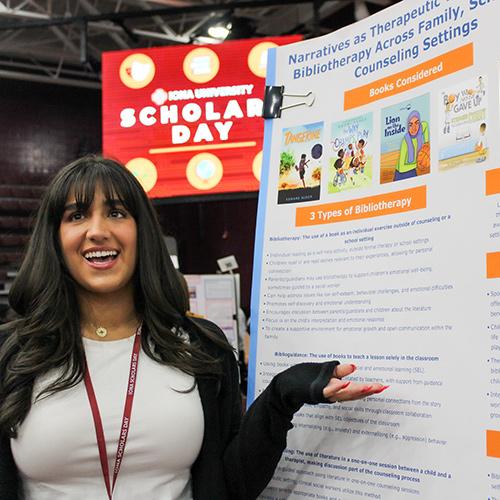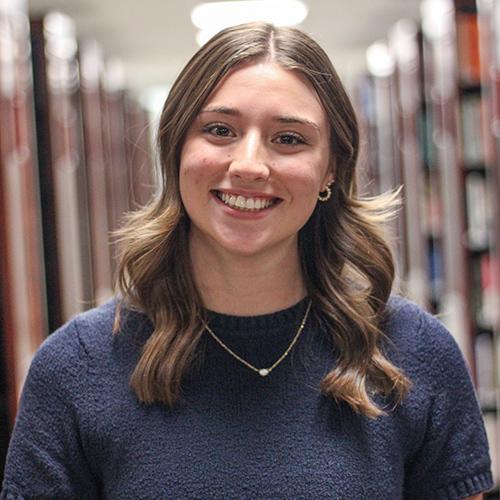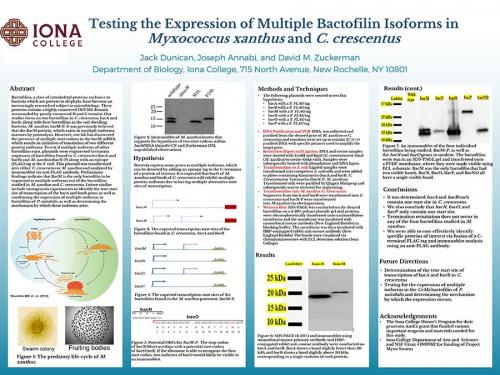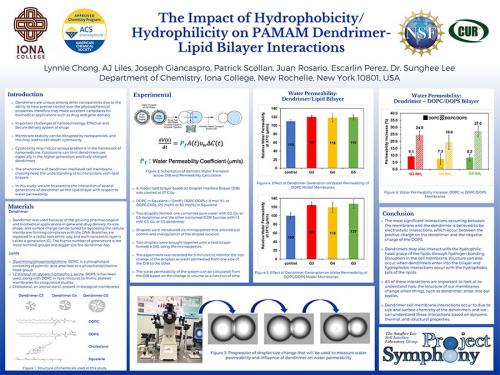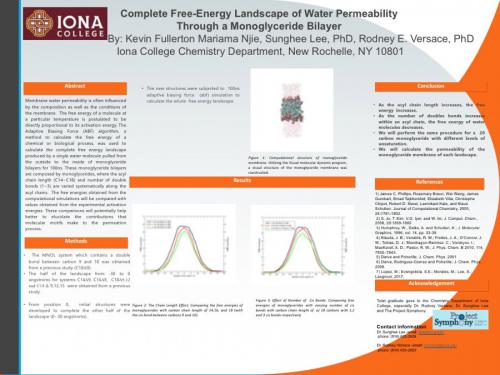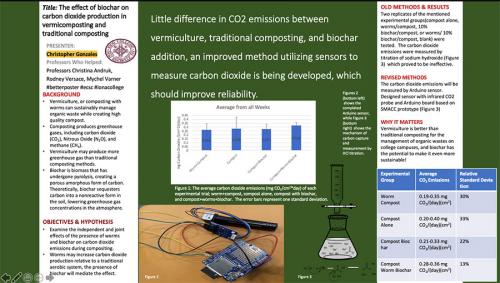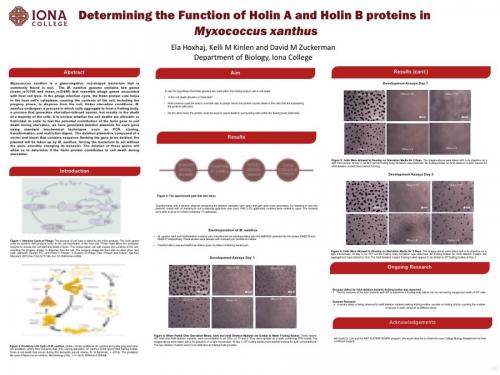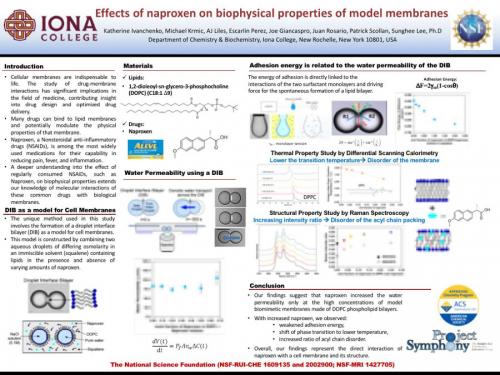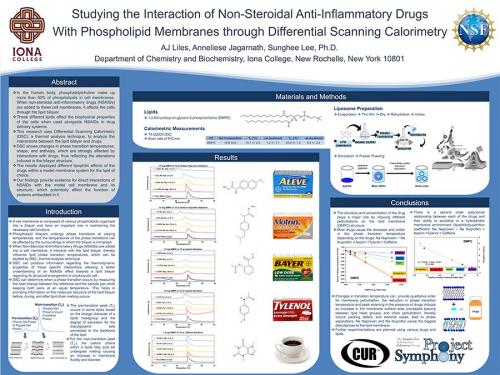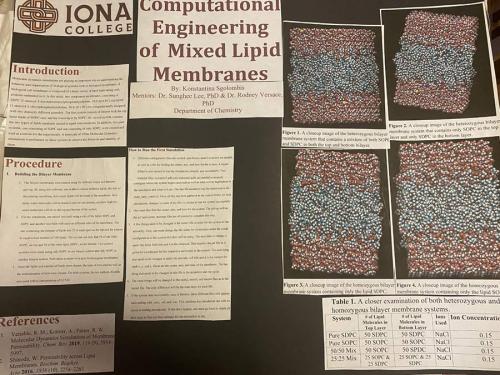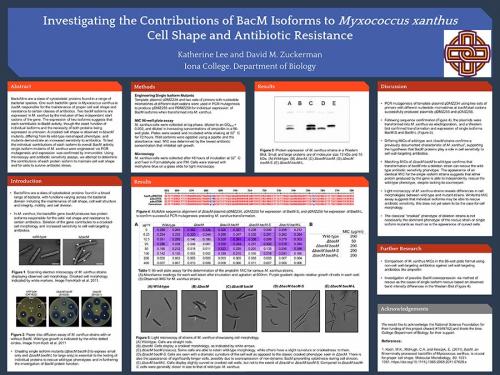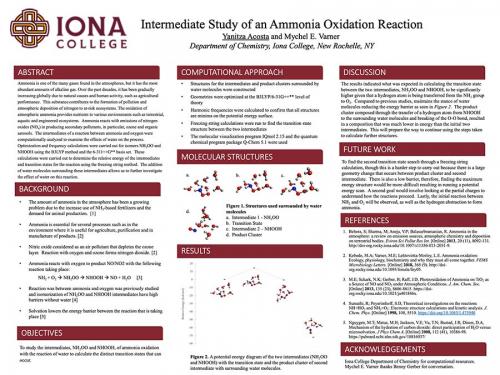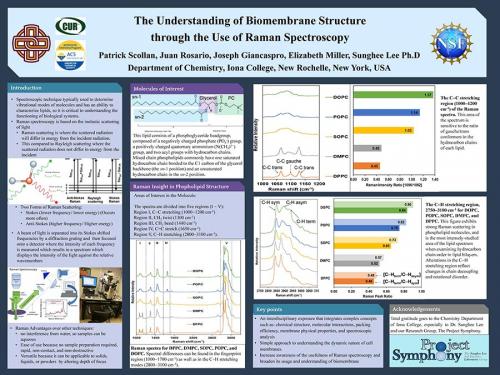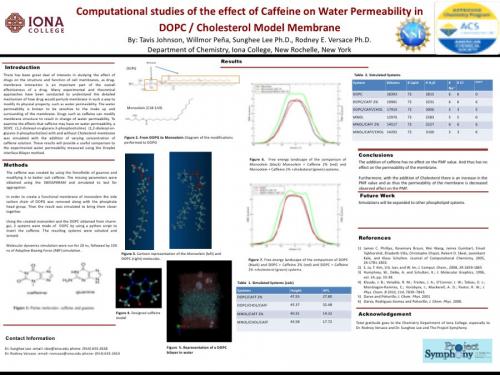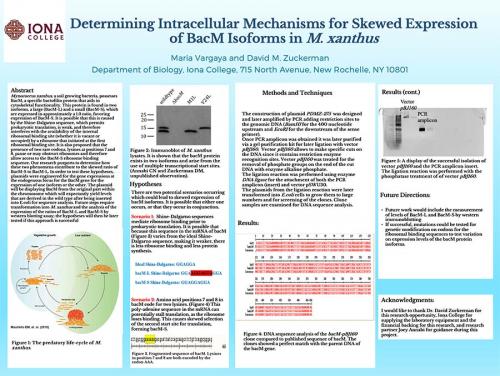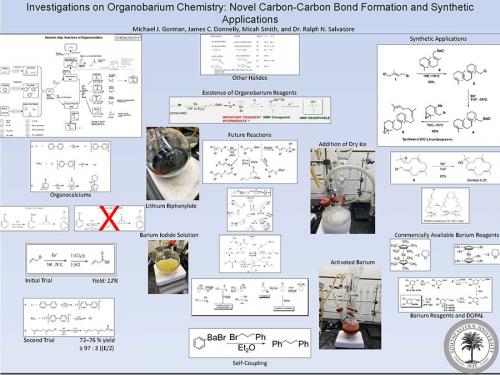ISD Poster Presentations: Natural Science
Welcome to Iona Scholars Day 2021! Each poster presentation includes a link to participate in a live Zoom session where attendees will have the opportunity to meet the presenters, ask questions and discuss the project. These live, interactive sessions will occur on April 22 from 11 a.m. - noon and 1 - 2 p.m.
Joseph Annabi '22, Biochemistry
Coauthor: Jack Dunican '21, Biology
Faculty Advisor: David Zuckerman, Ph.D.

This project focuses on interactions of a cytoskeletal protein exclusive to bacteria, bactofilins. This protein has been studied in greater depth over the past 20 years, and the role it plays in the cell motility and mobility, as well as overall cell survival is a current area of study. Our work focuses on expression of bactofilins found in the soil dwelling bacteria, Myxococcus xanthus and water-dwelling bacteria, Caulobacter crescentus. Our lab group has previously determined that one bactofilin of M. xanthus, bacM, exists in multiple isoforms, a large and small, which arise via alternative start site selection (Fig 2), a mechanism analogous to alternative splicing in eukaryotic mRNA. This occurs as transcription of bacM occurs at one of two different start sites, with the mechanism by which this occurs as well as the reason for this occurrence remain to be elucidated. To examine if other bactofilins also utilize alternative start site selection, our group conducted similar studies on the bacN-P bactofilins of M. xanthus and bacA and bacB of C. crescentus. Based on sequence analysis, it is hypothesized that bacO of M. xanthus and bacB of C. crescentus contain two start sites which could lead to the formation of two protein isoforms. To test this hypothesis, the gene for each bactofilin was inserted into a plasmid along with an epitope (FLAG) tag at the 3' end. These vectors were transformed back into the host bacteria, M. xanthus or C. crescentus to generate the bactofilin protein to be subsequently analyzed by immunoblot with antibodies that bind the epitope tag. The results of these experiments indicate that none of the bactofilins studied express multiple isoforms of bactofilin protein, making bacM the only bactofilin in M. xanthus or C. crescentus to have where this occurs. Future areas of inquiry include determining the true start site of transcription for bacA and bacB of C. crescentus, as well as continuing to test for the expression of multiple isoforms of bactofilins by studying the CcMa protein of Proteus mirabilis and determining if alternative start site occurs in the formation of this protein.
Live Presentation
Join us at 11 a.m. for a live Zoom session where participants will have the opportunity to learn more about this project.
11 a.m. session: Join from PC, Mac, Linux, iOS or Android
Password: 538099
Lynnie Chong '21, Biochemistry
Coauthors: AJ Liles '21, Biochemistry, Patrick Scollan '21, Chemistry, Juan Rosario '21, Biochemistry and Joseph Giancaspro '20, Biochemistry
Faculty Advisors: Sunghee Lee, Ph.D. and Casey Dougherty, Ph.D.
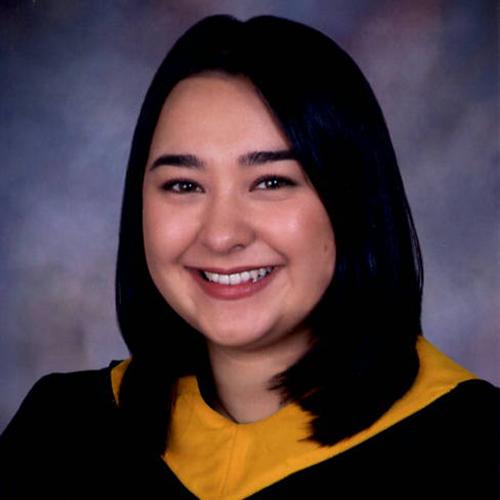
Lynnie Chong, senior biochemistry major, describes her research on the interactions of PAMAM dendrimers and lipid bilayers.
Live Presentation
Join us at 1 p.m. for a live Zoom session where participants will have the opportunity to learn more about this project.
1 p.m. session: Join from PC, Mac, Linux, iOS or Android
Password: 896943
Kevin Fullerton '21, Biochemistry
Coauthor: Mariama Njie '20, Chemistry
Faculty Advisor: Sunghee Lee, Ph.D.
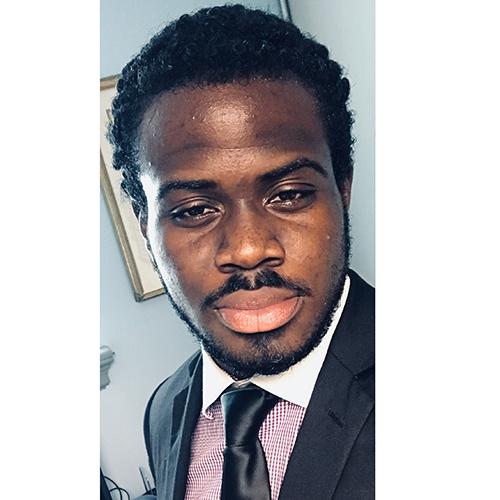
This presentation illustrates a computational method to calculate the free energy of water transport phenomena across the model membrane of monoglycerides having diverse characteristics including chain length and saturation. The findings allow us to better understand the sensitivity of molecular composition and structure for the water permeation process.
Live Presentation
Join us at 11 a.m. for a live Zoom session where participants will have the opportunity to learn more about this project.
11 a.m. session: Join from PC, Mac, Linux, iOS or Android
Password: 538099
Bruna De Carvalho '21, Chemistry
Coauthor: Christopher Gonzales '22, Biochemistry
Faculty Advisor: Casey Dougherty, Ph.D.
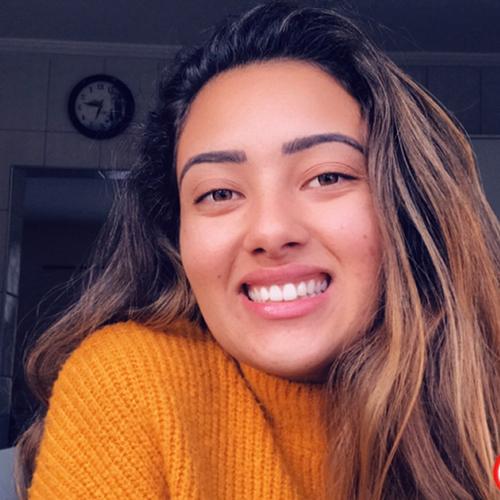
Bruna De Carvalho, senior chemistry major, and Christopher Gonzales, junior biochemistry major, describe the bioremediation of solvents using bacteria to eliminate transportation of chemicals to chemical waste facilities.
Live Presentation
Join us at 11 a.m. for a live Zoom session where participants will have the opportunity to learn more about this project.
11 a.m. session: Join from PC, Mac, Linux, iOS or Android
Password: 538099
Christopher Gonzales '22, Biochemistry
Faculty Advisors: Christina Andruk, Ph.D. and Mychel Varner, Ph.D.
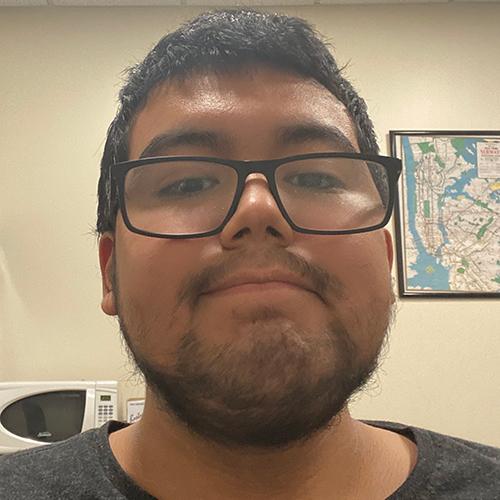
American colleges are responsible for throwing out over 22 million pounds (almost 10 million kilograms) of food waste a year (Poon 2015). In addition, colleges are required to maintain and pay for expensive dumpsters to store wasted food (Payne 2010). Vermiculture, or composting with worms, has the potential to sustainably manage organic waste from college campus while creating high quality compost. Composting with biochar as an additive has been shown to increase carbon sequestration and mineralization, but only in certain conditions. It was hypothesized that adding biochar to Eisenia foetida vermiculture would produce less carbon dioxide than vermiculture alone. Six worms were added to yard waste , half of which contained 10% biochar by weight. These were compared to controls containing yard waste without worms, half of which contained 10% biochar. Sodium hydroxide traps were placed in each container for one week. After one week, the sodium hydroxide solution was titrated to quantify carbon dioxide production. After four 1-week trials, no apparent difference was determined between the experimental and control groups, even between weeks due to a high standard deviation. Future experiments could deal with different amounts of biochar in the medium, ranging from 5% to 10%, adding more replicates, and using an infrared Arduino sensor to more accurately measure carbon dioxide production, thus decreasing the variance and standard deviation.
Live Presentation
Join us at 11 a.m. for a live Zoom session where participants will have the opportunity to learn more about this project.
11 a.m. session: Join from PC, Mac, Linux, iOS or Android
Password: 538099
Ela Hoxhaj '23, Biochemistry
Coauthor: Kelli Kinlen '21, Biology
Faculty Advisor: David Zuckerman, Ph.D.
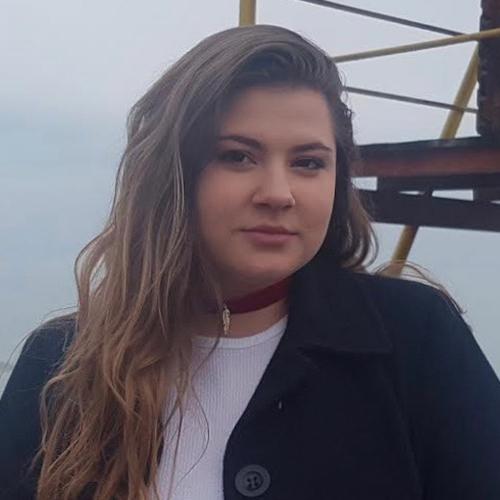
In my presentation, I describe my research project under the mentorship of Dr. Zuckerman working with the bacteria Myxococcus xanthus.
Live Presentation
Join us at 11 a.m. for a live Zoom session where participants will have the opportunity to learn more about this project.
11 a.m. session: Join from PC, Mac, Linux, iOS or Android
Password: 538099
Katherine Ivanchenko '23, Biochemistry
Minor: Mathematics
Coauthors: Michael Krmic '22, Biochemistry, AJ Liles '21, Biochemistry, Escarlin Perez '22, Biochemistry, Juan Rosario '21, Biochemistry and Patrick Scollan '21, Chemistry
Faculty Advisor: Sunghee Lee, Ph.D.
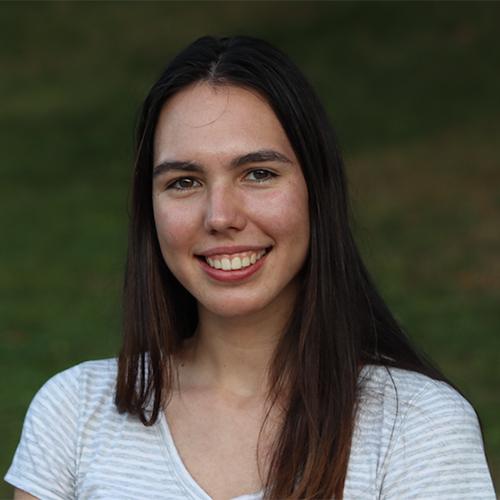
This presentation investigates the effects of naproxen, a common over-the-counter drug, on the various biophysical properties of model cellular membranes to extend our knowledge of molecular interactions of such drugs with biological membranes.
Live Presentation
Join us at 1 p.m. for a live Zoom session where participants will have the opportunity to learn more about this project.
1 p.m. session: Join from PC, Mac, Linux, iOS or Android
Password: 896943
Michael Krmic '22, Biochemistry
Faculty Advisor: Sunghee Lee, Ph.D.
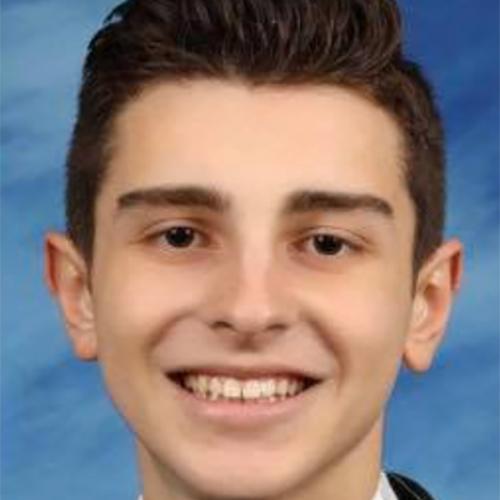
This presentation demonstrates the method of electrophysiology to determine the formation of model lipid bilayer and quantification of membrane thickness, thereby providing important insights on the relationship between the composition and property of the lipid bilayer.
Live Presentation
Join us at 11 a.m. for a live Zoom session where participants will have the opportunity to learn more about this project.
11 a.m. session: Join from PC, Mac, Linux, iOS or Android
Password: 538099
AJ Liles '21, Biochemistry
Faculty Advisor: Sunghee Lee, Ph.D.
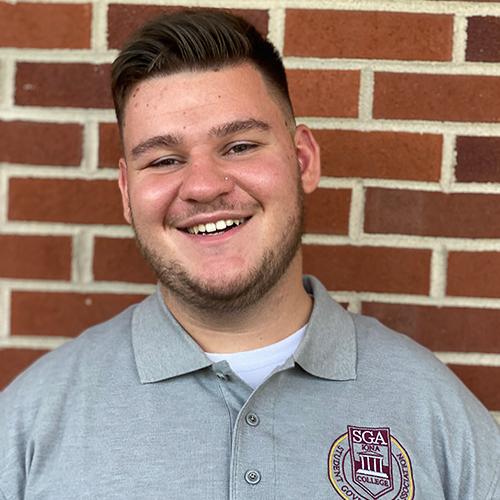
AJ Liles, senior biochemistry major, describes the importance of over-the-counter drugs, like Aspirin, and their effect on the body at a microscopic level through thermal analysis.
Live Presentation
Join us at 1 p.m. for a live Zoom session where participants will have the opportunity to learn more about this project.
1 p.m. session: Join from PC, Mac, Linux, iOS or Android
Password: 896943
Juan Rosario '21, Biochemistry
Faculty Advisor: Rodney Versace, Ph.D.

Juan Rosario discusses how conformations of lipids affects water permeation in the presence and absence of cholesterol using model membranes.
Elevator Pitch
Presentation
Live Presentation
Join us at 11 a.m. for a live Zoom session where participants will have the opportunity to learn more about this project.
11 a.m. session: Join from PC, Mac, Linux, iOS or Android
Password: 538099
Mohamed Salah '23, Biochemistry
Minor: Psychology
Coauthors: Andrew Maxwell '19, ACS Chemistry, Mesha Iqbal '20, Biology, LeAngela Brown '20, Chemistry and Bruna DeCarvalho '21, Chemistry
Faculty Advisors: Casey Dougherty, Ph.D. and Sunghee Lee, Ph.D.
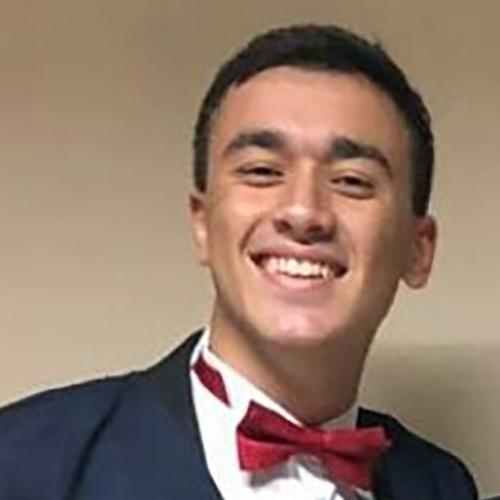
Mohamed Salah, Sophomore Biochemistry major and working under the mentorship of Dr. Casey Dougherty, describes G3-G5 PAMAM Dendrimer demulsification efficiency of crude oil in water emulsions.
Live Presentation
Join us at 1 p.m. for a live Zoom session where participants will have the opportunity to learn more about this project.
1 p.m. session: Join from PC, Mac, Linux, iOS or Android
Password: 896943
Konstantina Sgolombis '23, Biochemistry
Minors: Psychology, English
Faculty Advisors: Rodney Versace, Ph.D. and Sunghee Lee, Ph.D.
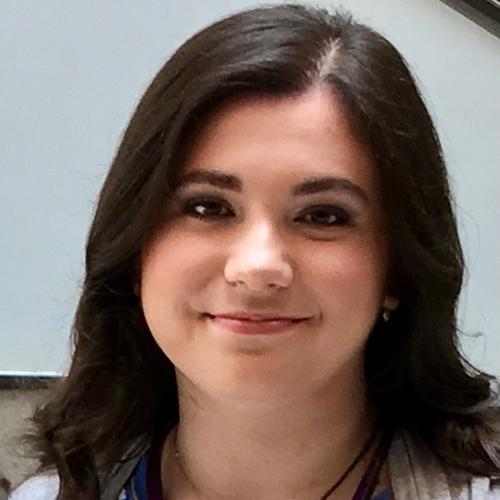
Molecular dynamics simulations are playing an important role in understanding the behavior and organization of biological systems such as biological membranes. A biological cell membrane is composed of a large variety of lipid types along with proteins embedded in it. In this study, two component membranes, consisting of SDPC (1-stearoyl-2-docosahexaenoylphosphatidylcholine, 18:0-22:6 PC) and SOPC (1-stearoyl-2-oleoylphosphatidylcholine, 18:0-18:1 PC) are computationally designed with two distinctly different assembly. The first system consists of bilayer with the top layer made of SOPC only and the lower layer by SDPC; the second system contains the two types of lipids randomly mixed in equal concentrations. In addition, two pure systems, one consisting of SOPC, and one consisting of only SDPC, were created, and used as controls for the experiments. A timescale of 100ns Molecular Dynamics simulations is performed on these systems to observe the behavior and stability of them.
Live Presentation
Join us at 11 a.m. for a live Zoom session where participants will have the opportunity to learn more about this project.
11 a.m. session: Join from PC, Mac, Linux, iOS or Android
Password: 538099
Katherine Lee '22, Biology
Faculty Advisor: David Zuckerman, Ph.D.
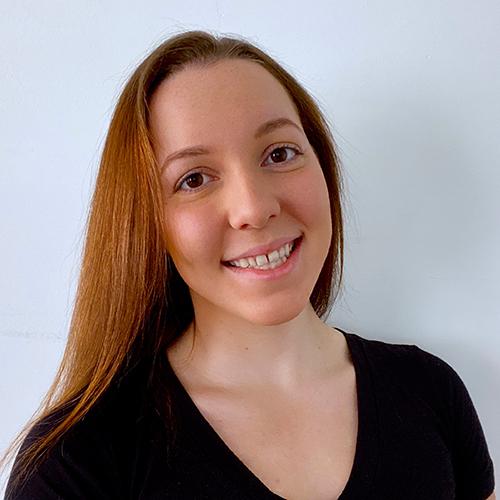
Bactofilins are a class of cytoskeletal proteins found in a range of bacterial species. One such bactofilin gene in Myxococcus xanthus is bacM, responsible for the maintenance of proper cell wall shape and resistance to certain classes of antibiotics. Two bacM isoforms are expressed in M. xanthus by the inclusion of two independent start codons of the gene. The expression of two isoforms suggests that each contributes to BacM activity, though the exact function of individual isoforms and the necessity of both proteins being expressed is unknown. A crooked cell shape is observed in ΔbacM mutants, differing from its wild-type rod-shaped phenotype, and mutants demonstrate an increased sensitivity to antibiotics. To test the individual contributions of each isoform to overall BacM activity, single isoform mutants of M. xanthus were engineered via PCR mutagenesis and expression was confirmed by immunoblot. Using microscopy and antibiotic sensitivity assays, we attempt to determine the contributions of each protein isoform to maintain cell wall shape and for cells to survive antibiotic stress. Results from a 96-well plate assay for the determination of minimal inhibitory concentrations (MICs) suggest that the single isoform mutants are able to rescue wild-type antibiotic sensitivity while the deletion strain fails. Preliminary microscopy of M. xanthus strains reveal phenotypes not seen in wild-type or deletion cells, including a curved cell morphology and longer cells. Results from the Western Blot and microscopy indicate possible overexpression of BacM protein resulting from the method by which mutated plasmids were engineered and reintroduced to M. xanthus cells and should be investigated further, while further microscopy needs to be done to further understand mutant cell morphology.
Live Presentation
Join us at 11 a.m. for a live Zoom session where participants will have the opportunity to learn more about this project.
11 a.m. session: Join from PC, Mac, Linux, iOS or Android
Password: 538099
James Martin, SEU, Class of 2020, Premedical Sciences
Coauthor: Joel Coker (Southeastern University)
Faculty Advisors: Ralph N. Salvatore (Southeastern University); Terrence Gavin
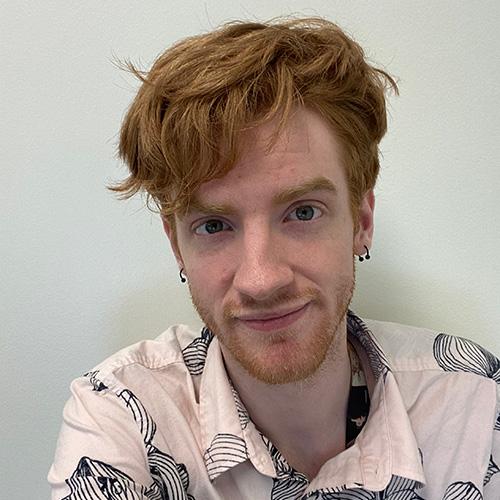
1Department of Natural Sciences, Southeastern University, 1000 Longfellow Blvd., Lakeland, FL 33801
2Iona University, Department of Chemistry, 715 N. Ave. New Rochelle, NY 10801 and
3University of South Florida, Department of Chemistry, 4202 E. Fowler Avenue, Tampa, FL 33620
3,4-Dihydroxyacetaldehyde (DOPAL) when injected into rat brain results in neuronal cell death that is more selective for cells in the substantia nigra (cells which are primarily dopamine producing cells). Despite the significance of DOPAL, it is not commercially available and must be synthesized. There are several published methods but they all share one common problem, DOPAL is very unstable and is very difficult to isolate and work with. In 1998, Li et al, reported a synthesis, however, required four steps, three chromatographic separations, and proceeded with an overall yield of about 4%. Thus, this project is directed toward increasing the yield and simplifying the synthetic process by shortening the route and eliminating most of the chromatography. Therefore, considerable effort to produce DOPAL in a higher yield would be of interest. In an effort to mitigate these problems, we have directed our attention toward the synthesis of DOPAL via two routes. First, a Wittig reaction that utilizes methoxymethyltriphenylphosphonium chloride, LDA and piperonal in tetrahydrofuran that resulted in an excellent yield of a mixture of the E and Z isometric vinyl ethers. Subsequent, aqueous hydrolysis of the E/Z mixture with sulfuric acid afforded 2-(3,4-methylene-dioxypheny1)-2-methoxyethene. After attempting numerous deprotection strategies for removal of the methylenedioxy group proved unsatisfactory, product decomposition, or protecting group shuffling, the development of a new condition employing phosphorus pentachloride was developed that removed the methylenedioxy group giving rise to DOPAL in ~40% yield. Second, we synthesized the title compound based on a pinacol-pinacolone type mechanism for the rearrangement in one-step by using perchloric acid. Due to the risks associated with perchloric acid (explosive when heated), we found a safer alternative using phosphoric acid as an alternative preparation for DOPAL from commercially available epinephrine (adrenaline). Finally, biological studies will also be presented.
Live Presentation
Join us at 1 p.m. for a live Zoom session where participants will have the opportunity to learn more about this project.
1 p.m. session: Join from PC, Mac, Linux, iOS or Android
Password: 896943
Yanitza Acosta '21, Chemistry
Faculty Advisor: Mychel Varner, Ph.D.

We were computationally looking at the two intermediates, NH2OO and NHOOH, surrounded by water molecules of an ammonia oxidation reaction to try to find certain transition states that occur.
Live Presentation
Join us at 11 a.m. for a live Zoom session where participants will have the opportunity to learn more about this project.
11 a.m. session: Join from PC, Mac, Linux, iOS or Android
Password: 538099
Kirsta Foote '22, Chemistry
Faculty Advisor: Casey Dougherty, Ph.D.
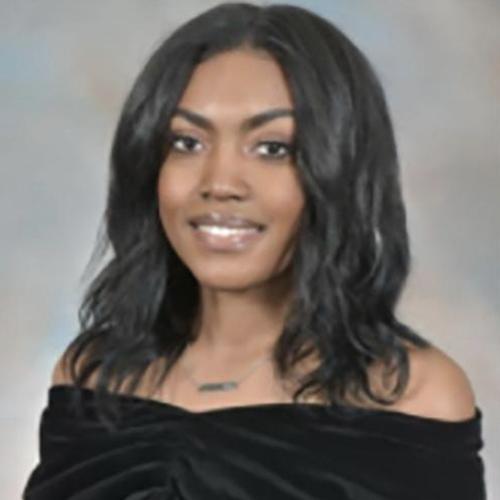
The oxidation of an alcohol to a ketone is an important and commonly taught synthetic reaction in the undergraduate organic chemistry laboratory curriculum. Many oxidation reactions, however, can be very toxic and hazardous based on the reagent needed for the chemical transformation. Three chemical conditions for the oxidation of an alcohol have been investigated in this project with varying reagents, reaction times, and overall “greenness”. Procedures have been developed for a 4-hour undergraduate organic chemistry laboratory where students will investigate the efficiency of the different reaction conditions and determine the toxicity and risks associated with each set of reagents.
Live Presentation
Join us at 11 a.m. for a live Zoom session where participants will have the opportunity to learn more about this project.
11 a.m. session: Join from PC, Mac, Linux, iOS or Android
Password: 538099
Keidy Matos '21, Chemistry
Minor: Mathematics
Coauthors: Lakshmanath Sawak '22, Chemistry (Minor: Biology) and Kevin Fullerton '2, Chemistry
Faculty Advisor: Casey Dougherty, Ph.D.
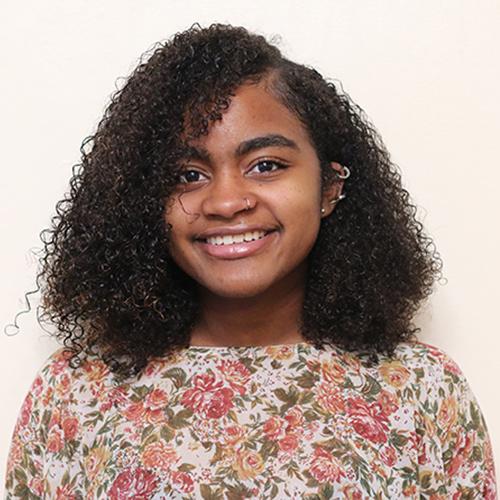
Keidy Matos senior chemistry major, Lakshmanath Sawak junior chemistry major and Kevin Fullerton senior biochemistry major, describe their green chemistry project on how to improve the broken glass waste disposal of the Iona college chemistry department.
Live Presentation
Join us at 1 p.m. for a live Zoom session where participants will have the opportunity to learn more about this project.
1 p.m. session: Join from PC, Mac, Linux, iOS or Android
Password: 896943
Keidy Matos '21, Chemistry
Minor: Mathematics
Faculty Advisor: Casey Dougherty, Ph.D.

Keidy Matos, senior chemistry major, describes the importance of click chemistry in bioconjugations, as well as the difficulties that can be faced when trying to find successful click reaction conditions for the conjugation of molecules with click functionalities.
Live Presentation
Join us at 1 p.m. for a live Zoom session where participants will have the opportunity to learn more about this project.
1 p.m. session: Join from PC, Mac, Linux, iOS or Android
Password: 896943
Patrick Scollan '21, Chemistry
Coauthors: Juan Rosario '21, Biochemistry and Joseph Giancaspro '20, Biochemistry
Faculty Advisor: Sunghee Lee, Ph.D.
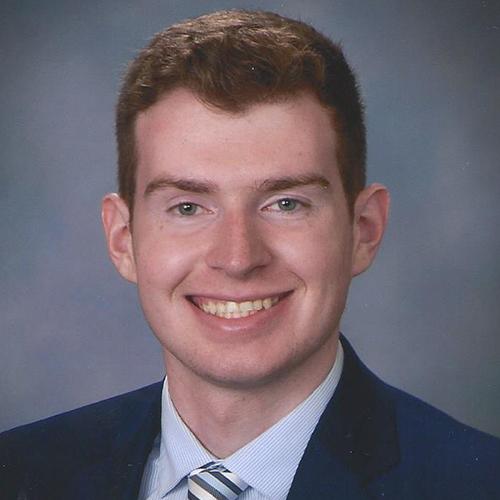
Patrick Scollan, senior chemistry major, describes the understanding of the biomembrane structure through the use of Raman Spectroscopy.
Live Presentation
Join us at 11 a.m. for a live Zoom session where participants will have the opportunity to learn more about this project.
11 a.m. session: Join from PC, Mac, Linux, iOS or Android
Password: 538099
Tavis Johnson '21, Chemistry
Faculty Advisors: Rodney Versace, Ph.D. and Sunghee Lee, Ph.D.
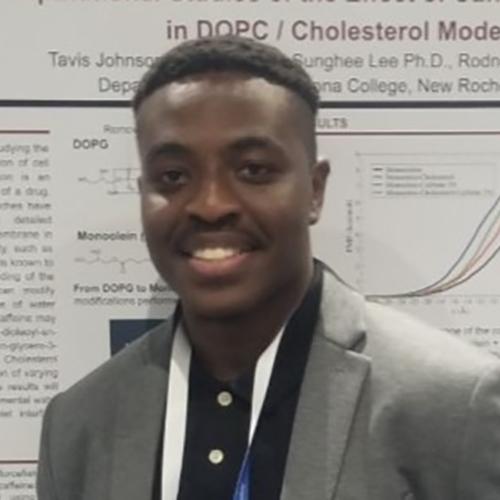
Maria Vargaya '23, Biology
Faculty Advisor: David Zuckerman, Ph.D.

My project is about the analysis of the protein isoforms present in the soil bacteria Myxococcus xanthus. The experiment focused on the engineering of plasmid PDMZ-275 for an identical display on the genetic sequence on the genomic DNA of Myxococcus xanthus. Future directions include the analysis of the expression of the protein isoforms via immunoblotting.
Michael J. Gorman, James C. Donnelly and Micah Smith
Faculty Advisor: Ralph N. Salvatore, Ph.D.
Michael J. Gorman1, James C. Donnelly1 Micah L. Smith1, and Ralph N. Salvatore1,2 Department of Natural Sciences, Southeastern University, 1000 Longfellow Blvd., Lakeland, FL, 33801 and 2Department of Chemistry, University of South Florida, 4202 E. Fowler Ave., Tampa, FL 33620
Organometallic reagents are among the most powerful tools for C-C bond formation in the arena of organic synthesis. In light of the development of new or improved synthetic methodologies for C-C bond formation, reactions that involve the development of new organometallic reagents are of great interest. In our laboratories, novel organobarium reagents (RBaX) have been prepared.
Barium metal in its reactive form (Ba*) has been prepared by a similar protocol for reactive calcium reagents. Thus, up to now, ó bonds between the heavier alkaline earth metals and carbon atoms have only been structurally characterized for calcium. Commercially available barium metal cannot be use for this method. Following Rieke’s method for calcium, the corresponding anhydrous metal halide is reduced by lithium naphthalenide or biphenylide at room temperature. Therefore, reduction of anhydrous barium iodide [from finely ground commercially available barium iodide (BaI2•2H2O) dried at 150 oC under reduced pressure for 12-24 h was achieved. [The color of BaI2•2H2O changed from pale yellow to white during the first 1-2 h, with no subsequent change in color]. Under a nitrogen atmosphere, with stirring, lithium biphenylide in dry tetrahydrofuran was added to the BaI2 solution at room temperature to afford Ba* as a dark brown suspension. The subsequent suspension was utilized for the generation of RBaX via the addition of an alkyl halide.
With such reagents in hand, we have explored efficient C-C bond forming reactions. Moreover, since the structure of Ba* (or RBaX) is unknown, mechanistic investigations of the intermediates and preliminary NMR results will be shared. Also, we have applied these methods toward the preparation of various structurally diverse complex molecules as well as the preparation of a biochemically important aldehyde, 3,4-Dihydroxyphenylacetaldehyde (DOPAL). DOPAL is a toxic metabolite, which is found in catecholamine neurotransmitter systems, that has an important role in medicinal research in the study of alcoholism, Alzheimer's and Parkinson's disease. Thus, our initial results toward the preparation of DOPAL will be presented.
Keywords: Organobarium, Organic synthesis, DOPAL, Barium reagent, Rieke’s method
Corresponding author/email: Dr. Ralph N. Salvatore, rnsalvatore@seu.edu
Live Presentation
Join us at 1 p.m. for a live Zoom session where participants will have the opportunity to learn more about this project.
1 p.m. session: Join from PC, Mac, Linux, iOS or Android
Password: 896943
